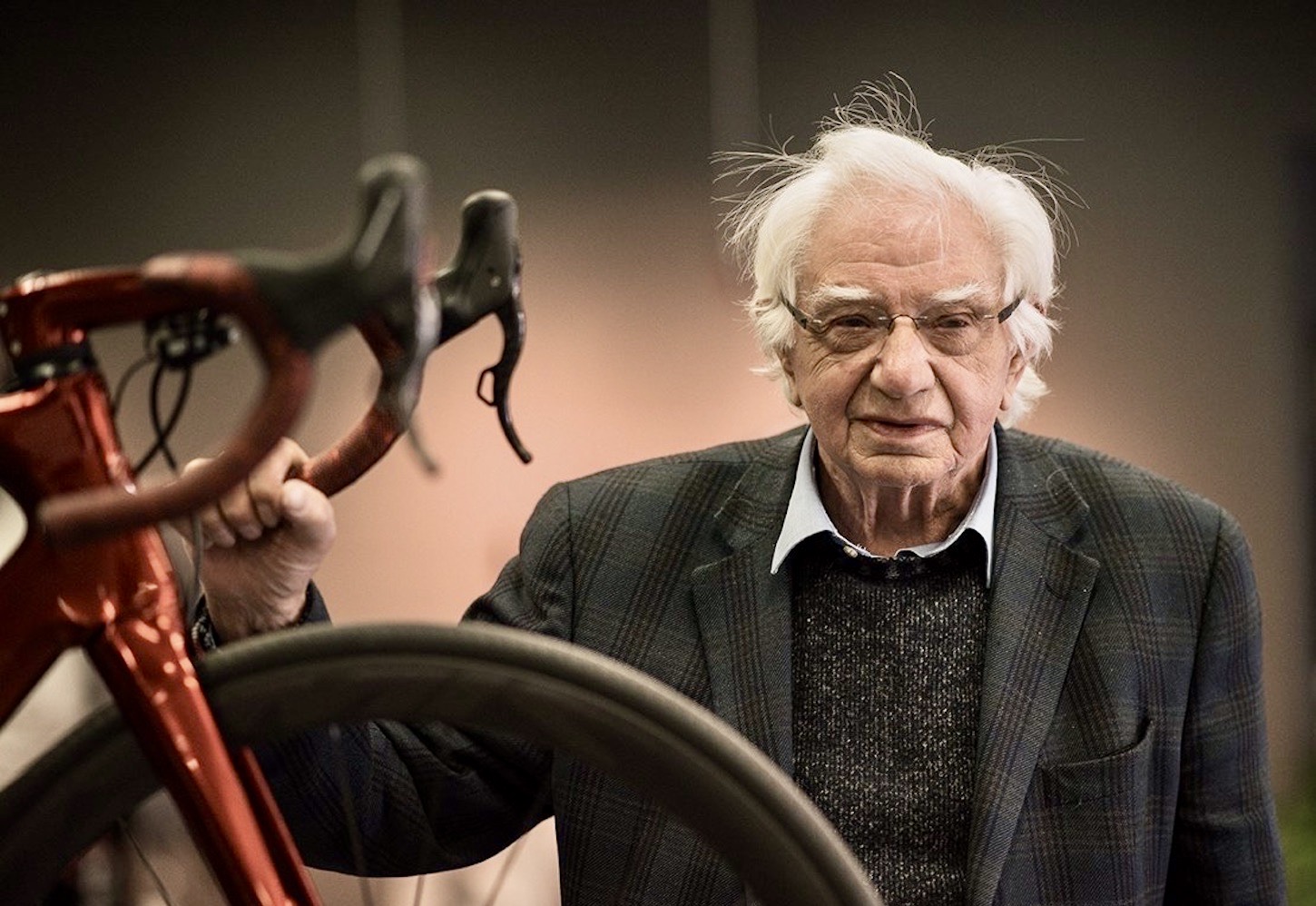

The iconic Italian bicycle maker, Ugo De Rosa, died at his home in Milan over the weekend, bringing the curtains down on a storied career of frame building and bicycle design that spanned more than half a century.
De Rosa was born on the 27th of January 1934 in Milan, Italy. He attended primary school, middle school and a technical school where he followed a mechanical and engineering curriculum. He developed a passion for bicycle racing as a young boy, a passion that remains with him to this day. It first led him to take up the sport of racing in which he advanced through several ranks at the amateur level. But he also became very interested in the science of the bicycle itself, and this proved to be the area where DeRosa would make his mark on the cycling world.
His first job was in the workshop of an uncle where he repaired and assembled bicycles. In the early fifties, Ugo De Rosa then went on to open his first shop in 1953 and dedicated himself to the manufacture of racing bicycles. With his experience in racing, he understood what it took to build a true racing bicycle and his reputation began to spread among the amateur racers in Milan
De Rosa’s Rise to the Professional Peloton
By 1958 the word of De Rosa’s frames had reached the professional peloton. While attending a race at the Vigorelli velodrome in Milan De Rosa was approached by a famous cyclist of the day, Raphael Geminiani. He asked De Rosa to build him a bike for the upcoming Giro d’Italia. De Rosa responded immediately to Geminiani’s request, for he knew that making this champion’s bikes would certify his craftsmanship and launch him into the world of professional cycling.
Following on from this success the sixties saw De Rosa bikes become a fixture in the professional peloton. The powerful Faema squad was the first team to ride De Rosas to the forefront with great champions like Soler and Suarez of Spain. Along with Belgian Rik van Loy they won a majority of the races they entered. Other De Rosa teams of the decade included Tbac (1964) and Max Majer (1967).
In 1969 De Rosa was approached by Gianni Motta, a great champion of that era who had admired the bicycles of the Max Majer team. Motta wanted to engage De Rosa as his frame builder and mechanic, De Rosa accepted and became the bicycle supplier to Motta’s powerful Sanson team as well. It was also during this period that one of the greatest stars of cycling was rising, Eddy Merckx. De Rosa built some frames for Merckx around this time, but it was not until 1973 that their now-famous relationship was established.
De Rosa and Merckx
Merckx asked Ugo to become the official frame builder and mechanic for the Molteni team captained by Merckx. The results were unprecedented as Merckx and his teammates won nearly all the major races including the Tour de France, the Giro d’Italia, Milano-San Remo and the World Championship. This partnership remained in effect until Merckx’s retirement in 1978. In 1981 Eddy again called upon his former frame builder to be a technical consultant when he first set up his own bicycle manufacturing facility
De Rosa’s talents were now in great demand by the mid-seventies and in 1974 another great racer came to him, Francesco Moser. Moser wanted De Rosa bicycles for his Filotex team. De Rosa agreed and the results were rewarding for both parties with Moser going on to win the World Championship.
The Passing of the Torch
So as the seventies came to a close Ugo De Rosa had gone from the humble beginnings in his uncle’s repair shop to becoming the frame builder of two World Champions. His sons Danilo, Doriano, and Cristiano were starting to come of age and showing great interest in the family business. The timing could not have been better as the demand for De Rosa bicycles skyrocketed in the eighties as De Rosa had entered new markets for the first time including the United States, Russia, Japan, Belgium, and Germany.
In 1982 he sponsored the Sammontana team led by Moreno Argentin and Giovanbattista Baronchelli. From 1985 to 1989 De Rosa worked with the Ariostea team which grew from a small start-up team to one of the dominant squads in the peloton by the end of the decade. The end of the eighties also saw De Rosa outgrow the small workshop adjacent to his home where all his frames had been made, and he moved to a larger space in Cusano Milanino and assigned his sons’ definite responsibilities. Danilo and Doriano followed directly in their father’s footsteps and started to work beside him building frames while Cristiano took over the commercial side of the business.
In 1990 Ugo De Rosa embarked on a new project to build bicycle frames from titanium tubes that would stand up to the rigors of professional racing and have the ride quality of a DeRosa. Ugo spent over three years in the research and development phase of this project. In 1994 the final results were delivered to the Gewiss-Ballan team in the form of the De Rosa Titanium.
The Italian marque went on to develop new techniques and designs across various materials throughout the 2000’s, particularly carbon fiber, which now occupies most of De Rosa’s range of bikes.
Ugo De Rosa was 89.






